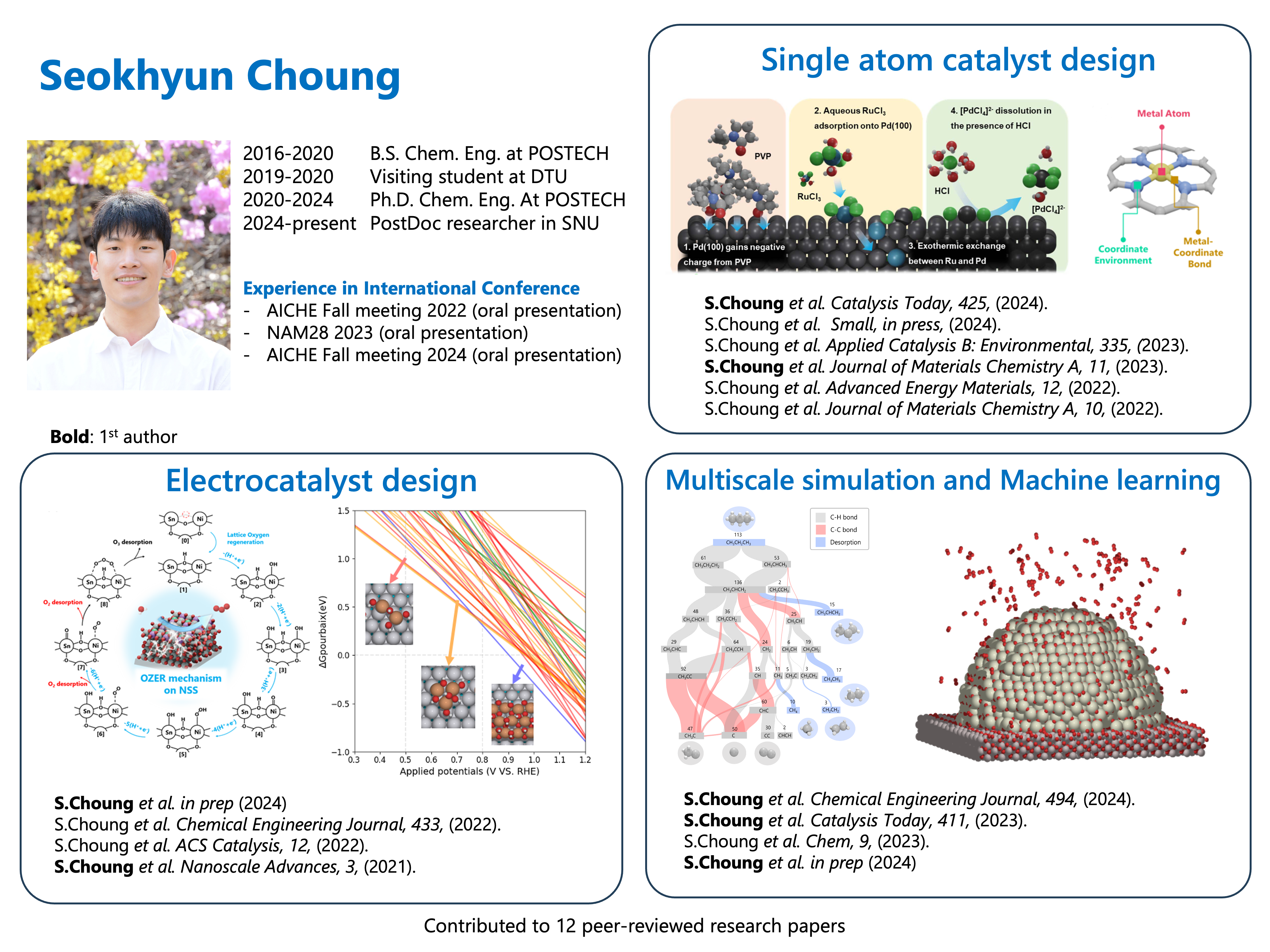2024 AIChE Annual Meeting
(4ce) Machine Learning Potentials in Multiscale Simulation for Heterogeneous Catalysis
Author
During my Ph.D. at the Department of Chemical Engineering, POSTECH (2020~2024), I have developed methods to extend the length and time scales of simulations using kinetic Monte Carlo simulations, microkinetic modeling, and machine learning methods, particularly machine learning potentials (MLPs).
Research Interests:
MLPs, leveraging public materials datasets and advanced representation methods such as Graph Neural Networks (GNNs), are revolutionizing high-throughput screening and optimization of catalytic systems by markedly enhancing computational speed and accuracy in predicting potential energy surfaces and active site configurations. Using pre-trained GNN-based MLPs, large-scale molecular dynamics (MD) simulations were performed to understand the reduction process of lattice oxygen in nanostructure-modified ceria systems. The lattice oxygen kinetics of the ceria surface is elucidated for the novel ceria nanoparticle morphologies, where the morphology and size are precisely controlled in experiments during the hydrothermal ceria synthesis. Large-scale MD simulations reveal that facile lattice oxygen donation from ceria occurs in a CO environment at the interfaces between rod (110) and cube (100) facets. MD simulations track the lattice oxygen donation process, similarly to isotope tracing experiments, allowing the identification of the lattice oxygen donors. By combining multiscale simulations using a pre-trained GNN and high-resolution experimental characterizations, this work provides a deep understanding of oxygen kinetics in ceria and insights for the rational design of other metal oxide nanostructures.
